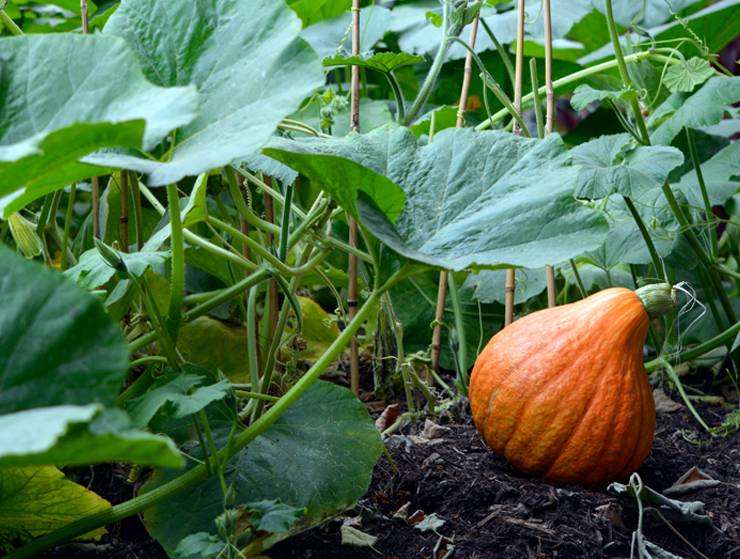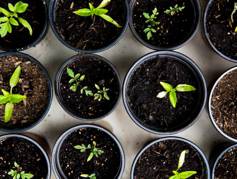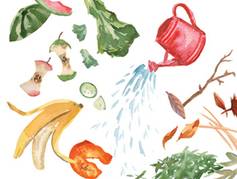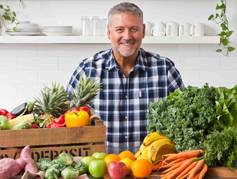Articles
Soil Part 2: A Farming System Focused on Healing
How can we align agricultural practices and conservation with human health? Regenerative agriculture could be the way! Diversity of crops in the field and diversity on our plates are part of the solution. Let’s explore ways to grow food that give back to the soil and help nourish people and communities too.
California’s Salinas Valley is known as the “salad bowl of the world,” because it’s such a highly fruitful agricultural region. Nearly 70 percent of all lettuces in the U.S. are grown on farms here, along with strawberries, spinach, cauliflower and many other types of produce.
But when family physician Daphne Miller started working in this area during the 1990s, she said most of the ailments she treated could be traced back to soil. Many of her patients at the local community hospital worked in the fields or in food packaging plants, and most of the farming happening then was conventional.
“Agriculture was making people sick with asthma, allergies, pesticide poisonings, etc.,” she shared at the 2020 No-till on the Plains Winter Conference in Wichita, Kansas.1 “I was on the frontlines of treating these folks and seeing these ailments.”
Helping those patients inspired her to look more deeply into the connection between human health and soil health.
“Together, how do we design a system of agriculture, a way of growing our food, that is helpful and that is making communities healthy?” she asked at the conference.
Connections To The Land
For the past fifteen years, her work has focused on aligning agriculture and conservation with human health. She started by talking to farmers, and many of their stories made into her book, Farmacology: Total Health from the Ground Up.
While writing the book, she visited several family farms, looking at everything from seed choice to soil management, uncovering clues about the impact those choices have on our health. She discovered principles that apply to both healing the land and healing human bodies.
When you increase life in the soil, you can also increase the nutrients of the plants. Diversity on a farm can also act as a reservoir of health that extends beyond the property to the surrounding community. When the land is healthy, the people get healthier too.
“It has a far-reaching effect,” she said.
In her book, she tells the story of philosophy-professor-turned-farmer Erick Haakenson, who bought Jubilee Farm in 1989, situated in Carnation, Washington, near Seattle.
The soil on his land was depleted, and he knew that nutrient-dense food could not grow in nutrient-deficient soil.
So he tested the dirt and started amending it with various minerals and vitamins. He added more than 50 tons of minerals but the health of the soil barely changed.
“Somehow it didn’t feel right,” Haakenson told Miller. “There were lots of minerals that I wasn’t sure where they were from. They were probably taken from developing countries, where their soil needed these minerals more than we do. I was also wondering, If these are all so good for my plants, why does the manufacturer recommend that I wear a mask when I’m spreading them?”
Eventually, he started researching more ways to help his soil thrive. He found some traditional books on farming that discussed looking at the most fertile places in the world and imitating the nature there.
Many of those productive places were tropical swamps with humid weather. Of course, he was in Washington State, but he set out to make his farmland into a rainforest, adding incredibly diverse species of plants, allowing water to percolate, and bringing in more types of animals.
After several years, his soil tests started to improve and his fruits and vegetables started to look more vibrant.

By creating a more complex system on the land with all those different plants and animals, he helped multiply the macro and micro life on the farm. The macro life included more pollinators and beneficial insects, plus an incredible variety of fruits and vegetables. The micro life improved too, as he could now measure more carbon in the soil and started seeing more fungi on the land, a sign that it contained more microbes.
Dr. Miller compared the approach Haakenson took at Jubilee Farm to patients in own her medical practice. She had been taught to suggest a supplement when someone was deficient in a certain vitamin and mineral, but she found a stronger approach was to treat the whole person and help them rebuild their health on many levels.
Rather than taking one supplement to try to boost it in the body, she told patients to eat a variety of farm-fresh foods. Dr. Miller says that the best predictor of a healthy is actually dietary diversity, as in eating many different types of fruits, vegetables, grains and legumes.
In fact, the more diversity humans have in their diets, the lower they experience rates of various chronic disease, autoimmune disease and even childhood asthma and allergies, she said.
A 2021 study confirms Dr. Miller’s theory. Researchers looked at the diets, health and microbiomes of more than a thousand people and found that diets rich in a variety of nutrient-dense, whole foods help support the growth of beneficial microbes, which promote health.2
The American Heart Association also promotes dietary diversity of nutrient-rich foods to help reduce the risk of major chronic diseases.3
PS: This is why if you struggle to eat the recommended 5-9 servings of fruits and vegetables each day, juicing can be a big boost to help you get there.4
Diversity is a big problem in agriculture today as three of the most popular (and subsidized) crops grown are wheat, corn and soy.5 These ingredients make up much of the processed junk foods today.
“The reality of American agriculture is that we’re not growing what we should be eating,” said Kranti Mulik, senior economist with Union of Concerned Scientists in a statement.6 “Only about 2 percent of U.S. farmland is used to grow fruits and vegetables, while 59 percent is devoted to commodity crops. But this situation isn’t just bad for our waistlines—it’s also holding back farmers and rural economies, and hurting the quality of life in farm communities and beyond.”
You can imagine that eating junk foods and taking supplements to help replenish your body can only go so far, and it’s the same for millions of acres of farmland.
Enter Regenerative Agriculture
Many advocates are now calling for a better system. They say the future of farming is regenerative, which is a type of farming that goes beyond organic to help replenish our soil, which in turn, helps nourish us too.
Regeneration International, a nonprofit that promotes the global transition to regenerative food, farming and land management for the purpose of restoring climate stability, ending world hunger and rebuilding deteriorated social, ecological and economic systems, defines regenerative agriculture as “farming and grazing practices that, among other benefits, reverse climate change by rebuilding soil organic matter and restoring degraded soil biodiversity—resulting in both carbon drawdown and improving the water cycle.”7
Let’s unpack that a bit.
The definition of “regenerate means” to restore to a better, higher, or more worthy state; to restore to original strength or properties.
This farming philosophy centers on healing the land, just as we might work to heal our bodies.
The main principles for regenerative agriculture are:
- Soil: Working to improve soil fertility and health.
- Water: Increase water percolation, retention, and promote clean and safe water runoff.
- Biodiversity: Enhance and conserve a variety of species.
- Ecosystem health: Create an environment for self-renewal and resiliency.
- Carbon: Manage the land so that the soil can absorb and hold more carbon.8
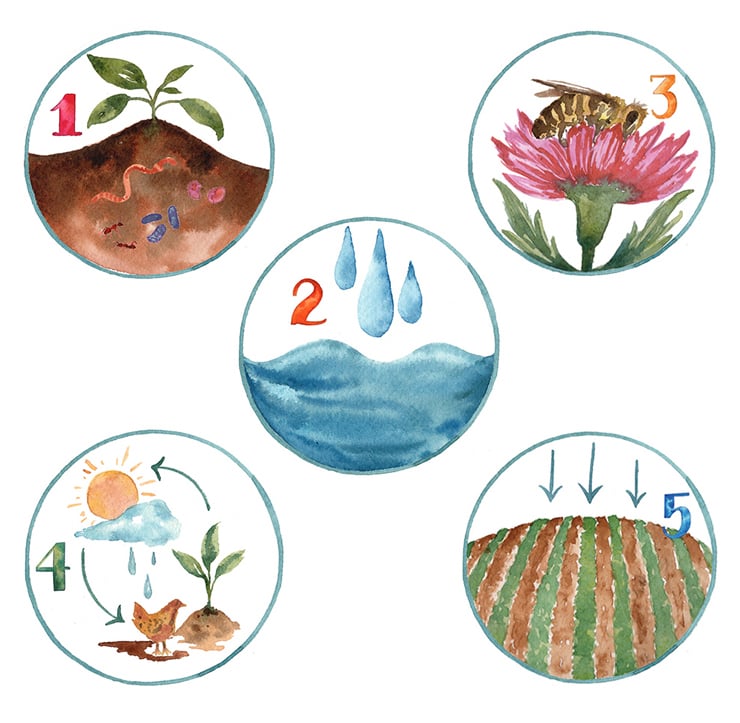
According to the Food and Agriculture Organization (FAO) of the United Nations, about a third of the world’s soil has already been degraded.9 Many human practices such as chemical-laden farming techniques and deforestation are contributing factors.
“Soils are the basis of life,” said Maria-Helena Semedo, deputy director general of natural resources at FAO. “Ninety five percent of our food comes from the soil.”
The FAO reports that soils play a key role in both absorbing carbon and helping filter water on the earth.10 When less carbon is stored in the soil, temperatures on the planet increase.
Dr. Jonathan Foley, executive director of Project Drawdown and a climate and environmental scientist, explained this connection in an article he wrote.
“When we think of climate change and greenhouse gas emissions, we usually envision power plants, factories, cars, and smokestacks—not farms and ranches,” Foley wrote. “But it turns out that agriculture and land use, as well as the larger global food system, are among the biggest contributors to climate change.”11
The most recent report from The Intergovernmental Panel on Climate Change found that storing carbon is essential to help lower atmospheric carbon levels.12 Healthy soils with more organic matter can be just what researchers are calling for, and regenerative agriculture can help.
A Soil-Rich Ranch
One of the most outspoken soil health pioneers is Gabe Brown, a farmer near Bismarck, North Dakota, who owns Brown’s Ranch.13
In February 2021, he testified at a virtual hearing of the U.S. House Agriculture Committee, focused specifically on climate change.14
“Regenerating our soil ecosystem is the most cost-effective national investment we can make to minimize and mitigate climate change and heal society,” he said. “The current system is broken. We need to change the way we see things and regenerative agriculture is a win for all.”15
Since 1993, he’s put soil health first and practiced no-till farming. He uses a diverse cropping strategy, which utilizes cover and companion crops. He’s eliminated the use of synthetic fertilizers, fungicides, and pesticides and does not employ GMOs or glyphosate.
“Our ever evolving grazing strategy allows most of our pastures a recovery period of over 360 days,” he says on his website. “These strategies have allowed the health of the soil, the mineral and water cycles to greatly improve. In other words, the natural resources have benefited. This results in increased production, profit and a higher quality of life for us. We are moving towards sustainability for not only ours but future generations as well.”
Today, making nutritious food choices goes beyond what will be fuel your body, but also what’s healthiest for the planet and the soil.
More Ways to Get Involved
Support The Farms!
Rise & Root Farm is a five-acre farm, run cooperatively by four owners who are women, intergenerational, multi-racial and LGBTQ. Located in the Black Dirt region of Orange County, NY, in the lower Hudson Valley, the farm is rooted in social justice, and through the healing power of food and farming, we work to build a more equitable food system.
Avenue 33 Farm is an urban farm in Los Angeles, California growing vegetables and flowers. With a focus on using regenerative practices to grow nutrient-dense food, they strive to increase biodiversity, build soil and create a draught-resilient ecosystem. They share knowledge and growing practices with anyone looking to channel their green thumbs through work days, classes, tours and collaborating within their community.
Table Bluff Farm—a first-generation, woman-owned farm—is situated on the edge of the Pacific Ocean and nestled between the Humboldt Bay National Wildlife Refuge and the mouth of the Eel River in Northern California. Following regenerative agriculture principles to create a farm focused on preserving and enhancing our natural ecosystem, they keep the “low cost/true cost” affordability of biodynamically grown, chemical-free, nutrient-dense vegetables, flowers, eggs, and meat for CSA members and local families.
Look for the Regenerative Organic Alliance Label
Regenerative Organic Certified was established in 2017 by a group of farmers, business leaders and experts in soil health, animal welfare and social fairness collectively called the Regenerative Organic Alliance, or ROA. As more farms around the world adopt regenerative organic practices, we can create long-term solutions to the climate crisis, factory farming and fractured rural economies.
Watch: What Makes Healthy Soil
“Bringing the Science of Soil Health Home,” with Buz Kloot, Ph.D., shows farmers and gardeners five key lessons he’s learned on his soil health trek across the country.
Stay tuned for Part 3 of the soil series which will look at home remedies for restoring soil using methods like composting (great for reducing food waste) and reusing juice pulp.
Click here to read the first article in this series:
Soil Part 1: How Soil Impacts Our Health—and the Health of Our Planet
sources:
- https://www.youtube.com/watch?v=9xMkBkL49vw&feature=emb_logo
- https://www.nytimes.com/2021/01/11/well/eat/diet-gut-microbiome.html, https://www.nature.com/articles/s41591-020-01183-8
- https://www.heart.org/en/healthy-living/healthy-eating/eat-smart/nutrition-basics/aha-diet-and-lifestyle-recommendations
- https://www.mylrh.org/blog/juicing-can-help-increase-fruit-vegetable-intake
- https://www.npr.org/sections/thesalt/2016/07/18/486051480/we-subsidize-crops-we-should-eat-less-of-does-this-fatten-us-up
- https://www.ucsusa.org/about/news/farmers-consumers-and-rural-communities
- https://regenerationinternational.org/why-regenerative-agriculture/
- https://www.localharvest.org/newsletter/20200428
- https://www.scientificamerican.com/article/only-60-years-of-farming-left-if-soil-degradation-continues
- http://www.fao.org/news/story/en/item/1339016/icode
- https://globalecoguy.org/farming-our-way-out-of-the-climate-crisis-c235e1aaff8d
- https://www.ipcc.ch/report/ar5/wg1
- http://brownsranch.us
- https://agriculture.house.gov/calendar/eventsingle.aspx?EventID=2108
- https://www.dtnpf.com/agriculture/web/ag/news/business-inputs/article/2021/02/26/examining-climate-change-lawmakers
- Choosing a selection results in a full page refresh.
- Press the space key then arrow keys to make a selection.
